Wild Yeast Brewing – Books About Wild Beer, Wine, Mead and More
This post may contain affiliate links. Read my full disclosure here.
Brewing with wild yeast is an idea that’s fascinated me ever since I read the original Wild Fermentation by Sandor Katz. In it, he described how simple it could be to make wild yeast “hooch”. With liquid and sugar, and some sort of flavor base (fruit, honey, flowers, grains, veggies), alcohol fermentation happens.
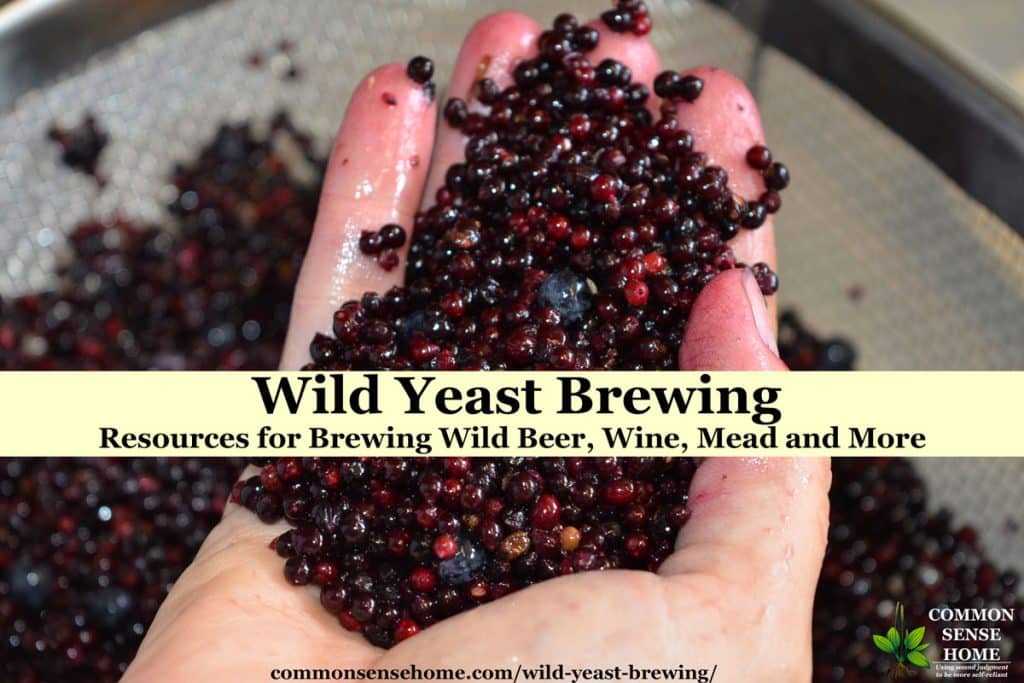
If you’re looking for an identical product every time to you brew a batch of wine, beer or mead, wild yeast is probably not the best option for you. If you’re ready to experiment with new flavors and a wide array of ingredients, wild yeast can expand your brewing world. You can brew for years and never make the same drink twice. Some brews are ready in days, others are best after years. You can use a wild yeast starter, or work with a spontaneous ferment. Some wild yeast brews are just for fun, others are good medicine.
What is Wild Yeast?
Wild yeast is what the name implies – natural yeast occurring on surfaces and in the air. Some plants have high concentrations of wild yeast, making them useful for wild brewing, such as berries and grapes, flower blossoms, and conifer tips. Wild yeasts are sometimes a little tricky to work with – they start off a little slower, or keep fermenting when you think they’re done. Sometimes your wild yeast gets overrun, and you end up with vinegar instead of wine. I recommend a good guide book to get you started, and patience to learn your craft. These are some of my favorite resources beer, wine, mead and more.
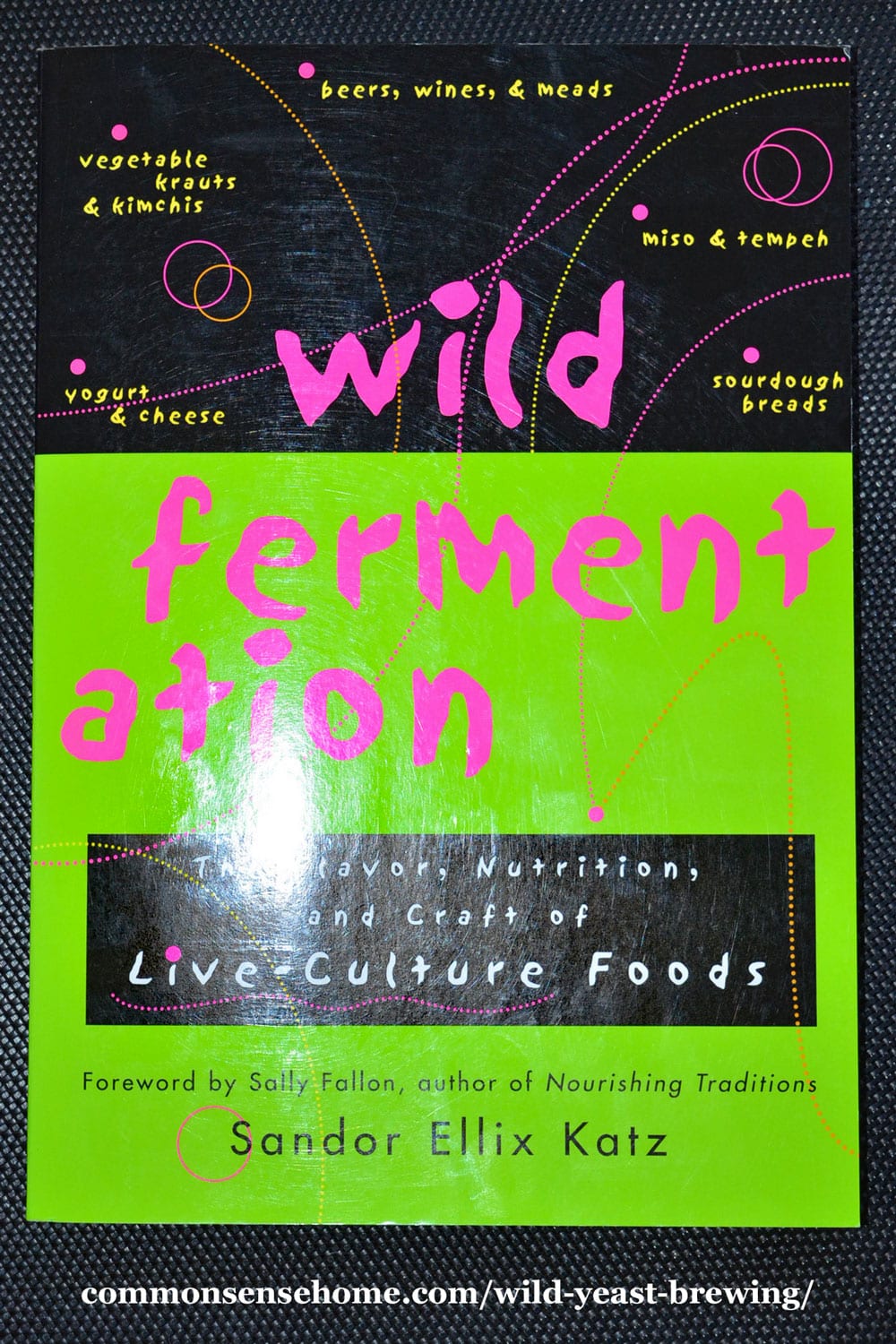
Wild Fermentation
By Sandor Ellix Katz
Wild Fermentation inspired me to make my first hard cider with wild yeast many years ago. The original was published way back in 2003, and it was updated in 2016. Sandor Katz has since become a well-known name in fermenting circles, teaching fermentation around the globe. The recipes in Wild Fermentation bring in some history and international flavor, and most are very easy to make. Specialized equipment is minimal, and some of the recipes only require one ingredient. Can’t get much simpler than that! There’s Bouza (Ancient Egyptian Beer) and Chang (Nepalese Rice Beer), Spontaneous Cider and Persimmon Cider Mead, plus a few others. While home brewing is not the primary focus, these recipes are a nice introduction to the topic.

Make Mead Like a Viking
Traditional Techniques for Brewing Natural, Wild Fermented, Honey-Based Wines and Beers
By Jereme Zimmerman
Make Mead Like a Viking is a fun home brewing book. The author opens with the origins of mead and some history of the brew. You can picture yourself back in the Viking Age, raising a drinking horn in celebration. There are even Viking era Games and Rituals. Jereme includes detailed info on different types of honey and their use in brewing. The recipes – and there are many of them – range from basic honey mead to mushroom and garlic mead to herbal sorghum beer and horehound ale. There are herbal metheglins (herbal mead) and berry melomels (fruit mead). Some recipes use a wild yeast starter, some use the wild yeast from the ingredients and surroundings. It’s intriguing and lighthearted, with common sense advice to help you safely make tasty wild yeast beverages.
Side note – wild yeast mead may also act as a powerful antibiotic. See the video below for more info.
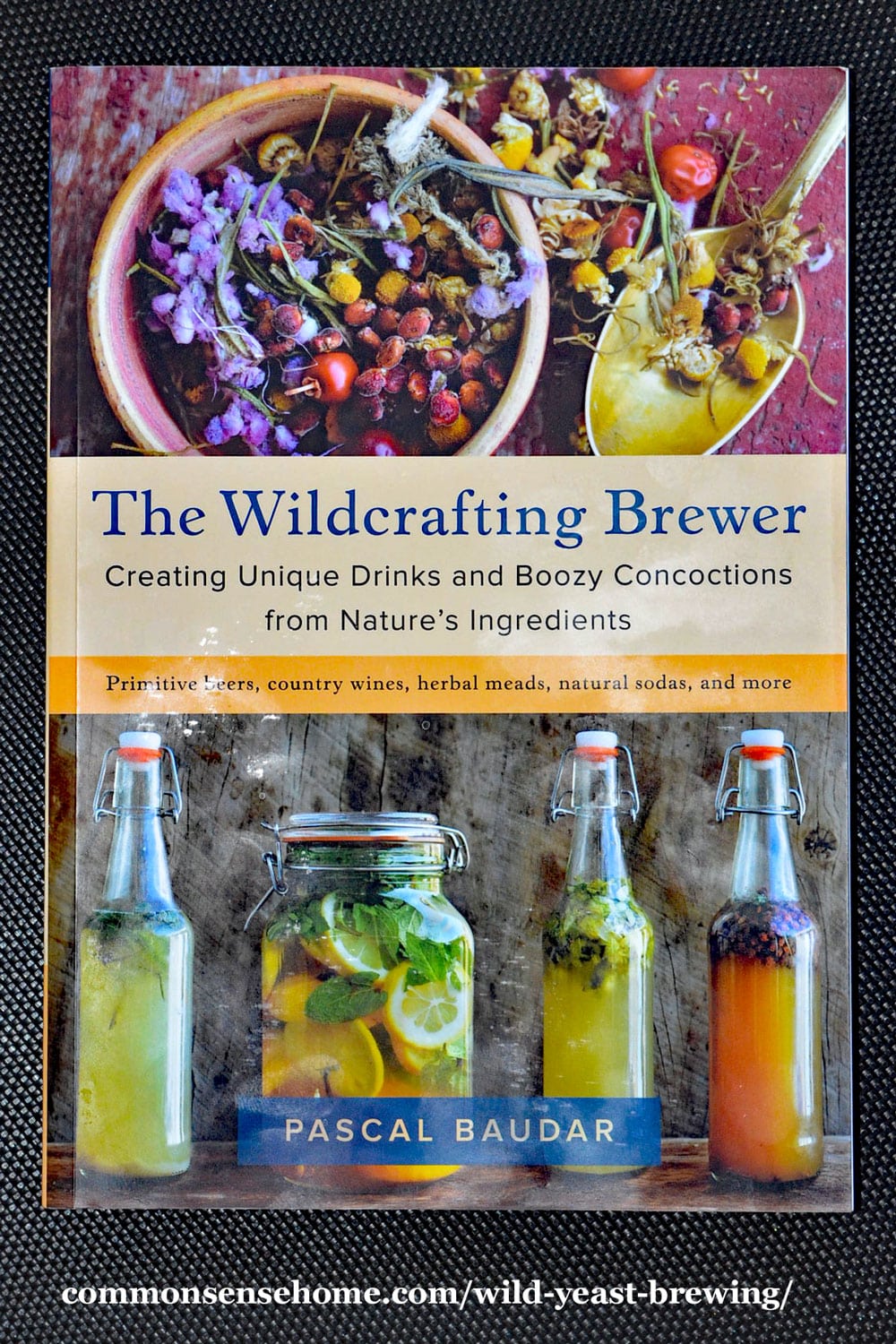
The Wildcrafting Brewer
Creating Unique Drinks and Boozy Concoctions from Nature’s Ingredients – Primitive Beers, Country Wines, Herbal Meads, Natural Sodas, and More
By Pascal Baudar
Would you like to save this?
The Wildcrafting Brewer is all about embracing the terroir, or unique flavors that come from a specific location. Some may recognize the author from his first book, The New Wildcrafted Cuisine. The Wildcrafting Brewer brings the same level of gorgeous photos and appreciation for the edible wild. I had no idea that wild yeast abounded on so many different plants, or how many different plants and plant parts can be used for brewing. Reading this book is like stepping through the looking glass.
While many of the recipes highlight the author’s own arid southern California climate, there are plenty of brewing tips to help you create wild yeast recipes for your own location. As the author notes, he’s found well over 150 possible ingredients suitable for creating wild yeast beers and other ferments.
I think one of my favorite things about this book is the wide range of recipes, including some that bridge different drink definitions. It’s all about creating unique and tasty wild yeast beverages. Someone else can worry about putting a specific label on the results. There are some step by step photos, many images of ingredients to help you ID your plants, and funky fermenting vessels. It’s an entertaining read even for those who don’t homebrew. (But after you read it, you’ll want to start brewing.)

Sacred and Herbal Healing Beers
The Secrets of Ancient Fermentation
By Stephen Harrod Buhner
Like the rest of Stephen’s books, Sacred and Herbal Healing Beers is overflowing with information. At nearly 500 pages, one can get lost in the book for days. It’s more of an ode to the history of fermentation than a standard recipe book. Reading the lore, legend and thoughtful observations in the book, there’s no doubt of the author’s love affair with the power of plants. He compares the relationship of wild yeast to commercial yeast as that of a wolf to a dog, and invites us into the wild.
Plants can help us to heal. Many of us have lost this connection, and it’s past time for it to be rediscovered. It’s not just the medicinal qualities of the herbs, but the vitamins and nutrients produced by wild yeast and fermentation. B12, riboflavin, thiamine, niacin, vitamin C – all common in fermented foods. commonly lacking in restricted diets. This book celebrates the life giving and healing powers of brewing. Whether you’re an herbalist, a history buff or simply an inquisitive brewer, you’ll enjoy this book.

Working with Wild Yeast
One of the most appealing things about all of these books is the freedom. Don’t have a specific ingredient? Here are some viable substitutes. Don’t want to sterilize your equipment with hardcore chemicals? Just follow basic kitchen sanitation rules. React to sulfates in your wine? Guess what, you can skip the campden tablets.
The first wine making books I read made my head spin because of the long list of equipment and specialty chemicals. I knew there had to be a way to brew without all of that, since folks have made booze for generations. I still appreciate the predictability of commercial brewing yeast, but now I know there are options. With wild yeast starters, you know you have frisky yeast, which removes some of the guesswork from wild yeast brewing.
I’m looking at my garden and yard with fresh eyes, imagining a variety of wild yeast brews. With these references, I know I’ll have plenty of inspiration for years to come. I hope you enjoy them, too.
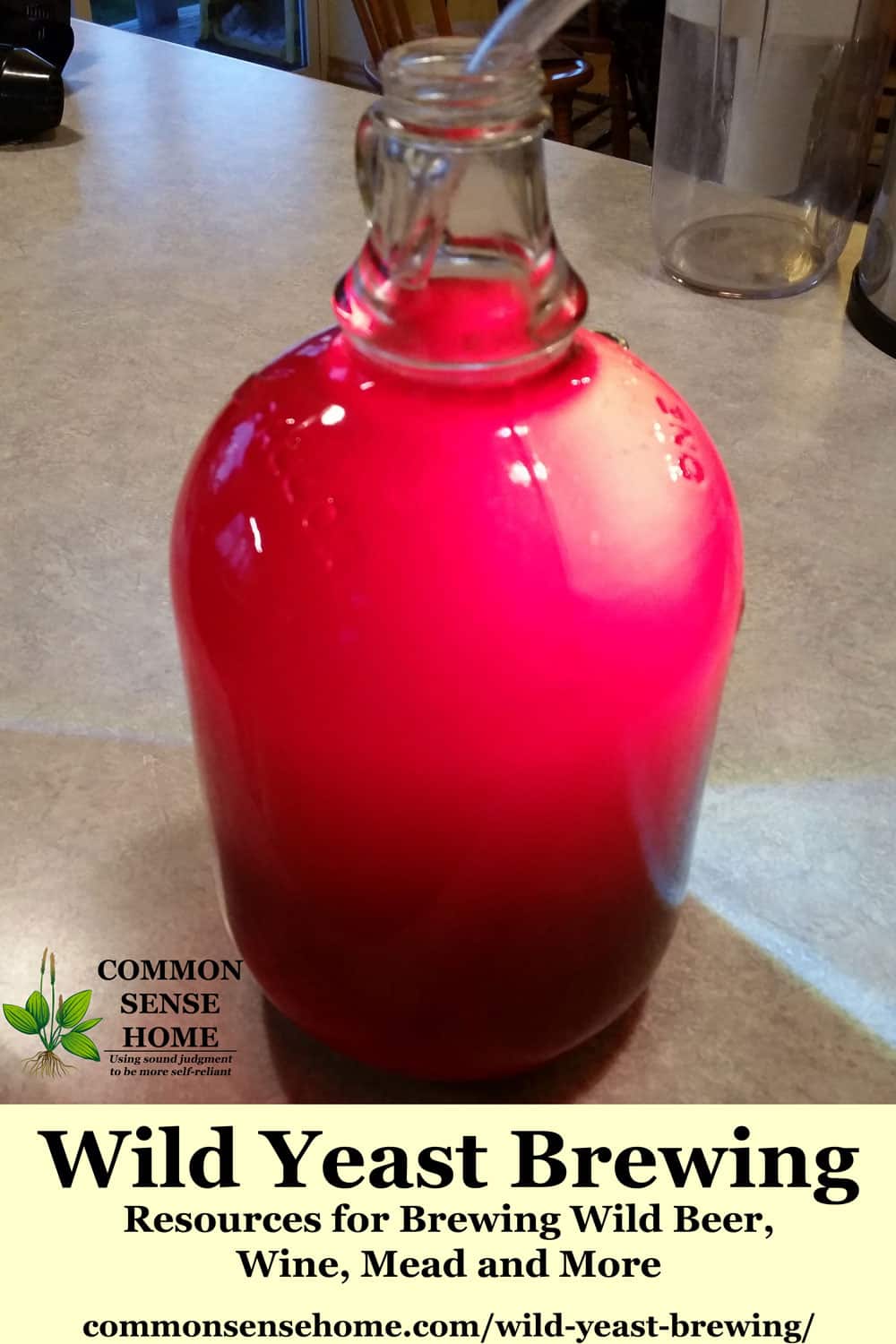
You may also find useful:

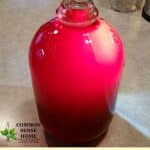
I never understood making mead. Honey is such a valuable useful product and relatively rare product. I have trouble believing that the Vikings and other medieval brethren wasted it making alcohol especially considering you couldn’t pop down to your local store and buy sugar! Seems to be very wasteful.
It wasn’t just “alcohol” – it was ritual and medicine. Wild yeast mead acts as probiotic, and may be able to fight antibiotic resistant pathogenic bacteria.
And many brews included herbs that also added medicinal properties.